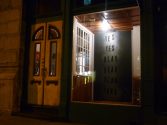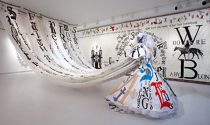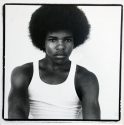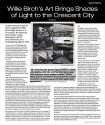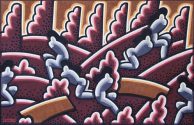“Mark Flood Becomes Latest Artist To Grace Tribeca’s Tiny Home Alone Gallery,” artinfo.com
Home Alone, the walk-in closet-sized Franklin Street gallery whose name was inspired by the record-setting copy of Edvard Munch’s “The Scream” — which goes on view today at MoMA — and its likeness to Macaulay Culkin in “Home Alone,” is currently host to a comic installation by the irreverent and resurgent art star Mark Flood.

